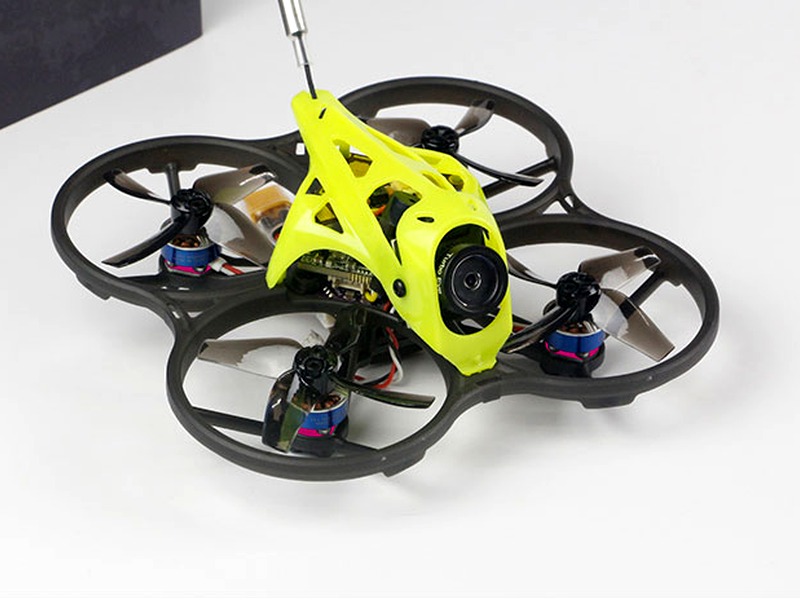What is thrust in quadcopter?

Thrust is an important concept to understand when flying a quadcopter. Thrust is the force that propels a quadcopter through the air and is generated by the spinning propellers. It is the result of the reaction force when a propeller pushes air downwards, which in turn creates an equal and opposite force that propels the quadcopter upwards. The total thrust generated by the quadcopter is determined by the size of the propellers, the speed of the motors, and the amount of air that the propellers can move.
The total thrust generated by a quadcopter is the sum of the thrust generated by each of its four propellers. In order to fly, the quadcopter needs to generate enough thrust to overcome its weight and lift it off the ground. The thrust generated by the propellers also needs to be balanced so that the quadcopter stays level and can fly in a straight line. If the thrust is unevenly distributed between the propellers, the quadcopter will experience a momentary torque that will cause it to rotate.
The thrust generated by a quadcopter can be adjusted by changing the speed of each of the four motors. The faster the motors spin, the more thrust is generated. The maximum thrust that a quadcopter can generate is determined by the size of the propellers and the power of the motors. The thrust generated by a quadcopter can also be adjusted by changing the pitch of the propellers. By increasing the pitch of the propellers, the quadcopter can generate more thrust, allowing it to fly faster.
In addition to generating thrust, the quadcopter’s propellers also provide stability. The spinning propellers create a gyroscopic effect that helps the quadcopter maintain its orientation in the air. This gyroscopic effect also helps to reduce the amount of power needed to maintain the quadcopter’s level flight.
In conclusion, thrust is an important concept to understand when flying a quadcopter. It is the force that propels the quadcopter through the air and is generated by the spinning propellers. The total thrust generated is determined by the size of the propellers, the speed of the motors, and the amount of air that the propellers can move. The thrust can be adjusted by changing the speed of the motors and the pitch of the propellers. In addition to providing thrust, the spinning propellers also provide stability to the quadcopter.
Comments / Question
2. Motor: The size and power of the motors affects the propeller speed and therefore the thrust generated.
3. Battery: The battery supplies power to the motor and its capacity affects the run-time of the quadcopter and its thrust.
4. Weight: The mass of the quadcopter, including the payload, affects how much thrust is required to create lift.
5. Air resistance: Higher air resistance reduces thrust due to increased drag.
6. Drag coefficient: The shape and design of the quadcopter can affect the drag coefficient, which affects the amount of thrust generated.
7. Altitude: Higher altitudes create lower air density and thus require more thrust to generate lift.

